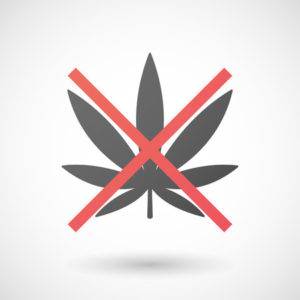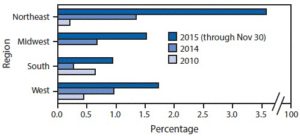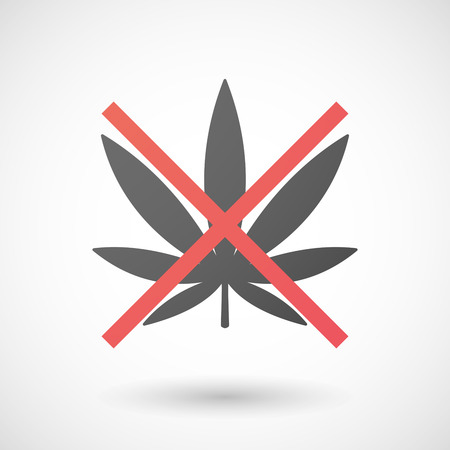
Like a snowball that begins rolling down from the very top of a hill, negative consequences from synthetic drugs have been building momentum for several years. LiveScience posted an article based on a CDC report that highlighted the increase of synthetic-cannabinoid overdoses. Between 2010 and 2015 there were a total of 456 synthetic-cannabinoid intoxications recorded by 101 US hospitals and clinics included in the study. While the overdoses from these substances are still a fraction of all drug overdoses in the US, their percentage has increased every year since 2010.
The CDC report was based on data gathered from the Toxicology Investigators Consortium (ToxIC), a toxicology surveillance and research tool. The ToxIC Registry was established by the American College of Medical Toxicology in 2010. Of the 456 cases of synthetic-cannabinoid intoxication treated by physicians in the ToxIC, 277 reported synthetic cannabinoids were the only substance used. The findings of the CDC report are representative of what doctors in emergency departments from around the country are seeing.
Among the 456 cases, 70.6% were in persons aged 19-65 and 27.4% were in persons aged 13-18; 83.1% were male. The reported adverse effects were primarily cardiovascular-related (17.0%), pulmonary-related (7.6%) or central nervous system-related (66.1%). The CNS symptoms included agitation, CNS depression or coma, and delirium/toxic psychosis. The annual percentage of cases increased significantly in all four US Census regions, except the South. “The largest overall increases during these periods took place in the Northeast, primarily driven by increases at the New York City sites.” See the chart below which was taken from the CDC report:
 The CDC report mentioned a June 2015 Morbidity and Mortality Weekly Report (MMWR) for June 12, 2015 that found a 300% increase of telephone calls to poison centers related to synthetic cannabinoid use from January 2015 to April 2015. The report suggested that synthetic cannabinoids posed an emerging public health threat. The number of calls spiked dramatically in mid-April. Look at the report for a chart showing the spike from less than 100 calls per week in the third week of March 2015 to over 500 weekly in the third week of April 2015.
The CDC report mentioned a June 2015 Morbidity and Mortality Weekly Report (MMWR) for June 12, 2015 that found a 300% increase of telephone calls to poison centers related to synthetic cannabinoid use from January 2015 to April 2015. The report suggested that synthetic cannabinoids posed an emerging public health threat. The number of calls spiked dramatically in mid-April. Look at the report for a chart showing the spike from less than 100 calls per week in the third week of March 2015 to over 500 weekly in the third week of April 2015.
Then there are the “bath salts.” The New York Times published an article referring to Brooklyn users of K2, a synthetic cathinone (bath salts), as “zombies.” In an area around the subway station at Myrtle Avenue and Broadway, emergency workers transported 33 people with suspected K2 overdoses to the hospital in ONE DAY. Brian Arthur, who filmed and then posted what he saw on online said: “It’s like a scene out of a zombie movie, a horrible scene . . . . This drug truly paralyzed people.” While responders helped an unsteady man into an ambulance, another man nearby was slumped against a fire hydrant.
Pairs of police officers walked the blocks around Broadway and Myrtle Avenue, checking the vital signs of men they found unconscious. Anyone who was unresponsive was loaded onto a stretcher and taken away in an ambulance.
Keep in mind this was after legislation by The New York City Council last Fall banned synthetic cannabinoids and threatened businesses and owners who sold K2 with closings, hefty fines and jail time. So it seems that the synthetic drug trade in NYC simply switched to synthetic cathinones.
A 2012 article in the Journal of Medical Toxicology, “The Toxicology of Bath Salts,” provides some background information on the emergence of synthetic cathinones as a drug of abuse. Synthesis of cathinone derivatives occurred as early as the late 1920s. Methcathinone was synthesized in 1928 and mephedrene in 1929. While a few of the derivatives have been investigated for medical use, only bupropion (Wellbutrin, Zyban) have been approved for a medical use in the US and Europe. Wellbutrin is approved to treat depression; Zyban is used as a smoking-cessation aide.
Numerous synthetic cathinone derivatives have become popular for use as “legal highs.” Exactly when these derivatives gained popularity amongst club goers and others seeking new drugs of abuse is difficult to pinpoint, but mentions in Internet drug forums began in 2007.
In “Synthetic Cathinones: A New Public Health Problem,” Karila et al. described the major clinical effects of synthetic cathinones and their impact on public health. Together with synthetic cannabinoids they account for more than two thirds of the New Psychoactive Substances (NPS) available. Again, cardiac psychiatric and neurological adverse effects are the most common ones requiring medical care. “These drugs, still not controlled by international laws, are often produced and used to mimic the effects of controlled drugs such as cocaine, methylenedioxymethamphetamine (MDMA, ecstasy), and methamphetamine.”
If you’re skeptical about what I’ve written so far, try this article from High Times, “What’s in Synthetic Cannabis and Why Is It So Dangerous?” In order to study the endocannabinoid system in the body, scientists created these compounds for research purposes. The author is quick to point out that synthetic cannabis does not contain cannabis or synthetic cannabinoids. While the compounds bind to cannabinoid receptors in the brain, they only have a “slight relation” to natural THC. “Doctors do not fully understand how most of these compounds interact with the body, and some can be extremely harmful and even deadly.”
The author suggested they would be better named: synthetic cannabinoid receptor agonists (SCRA). THC is only a partial agonist of CB1 and CB2,the cannabinoid receptors, where SCRAs are designed to bind strongly to the receptors and exert THC-like effects. These effects can be 100 times more potent than cannabis. The unusually strong binding of SCRAs to cannabinoid receptors can produce unforeseen downstream effects in the brain and nervous system.
If you consume any of these chemicals, you are literally performing an experiment on your body, and a dangerous one at that. People have suffered from seizures, cardiac arrest, kidney failure, severe reduction in body temperature, etc. and doctors don’t know how it happens or who is more susceptible.
Not only are there many different classes of these compounds, each one of the general classes of compounds contains dozens of different related compounds. “Regulatory agencies play a game of cat and mouse with designer drug manufacturers as they constantly use different compounds to bypass laws.” While the Us government continues to make different groups of SCRAs illegal, underground chemists seem to be one step ahead, making newer compounds that tend to be more toxic and harmful than the previous generation.
Steer clear of these dangerous substances, treat them like dangerous addictive drugs on par with methamphetamine, ecstasy pills and prescription narcotics. This stuff is not weed, and when your friends smoke it you should confront them about it and make them understand they are putting their lives at risk. Even if you need to pass a drug test, don’t use this stuff; even one toke of Spice can land you in intensive care and put you on a dialysis machine with kidney failure.
Let the fact sink in that what we just reviewed was a clear warning from High Times to avoid synthetic cannabinoids. Alternately, there are synthetic cathinones that can turn you into a zombie. Think about the consequences before you try some.





